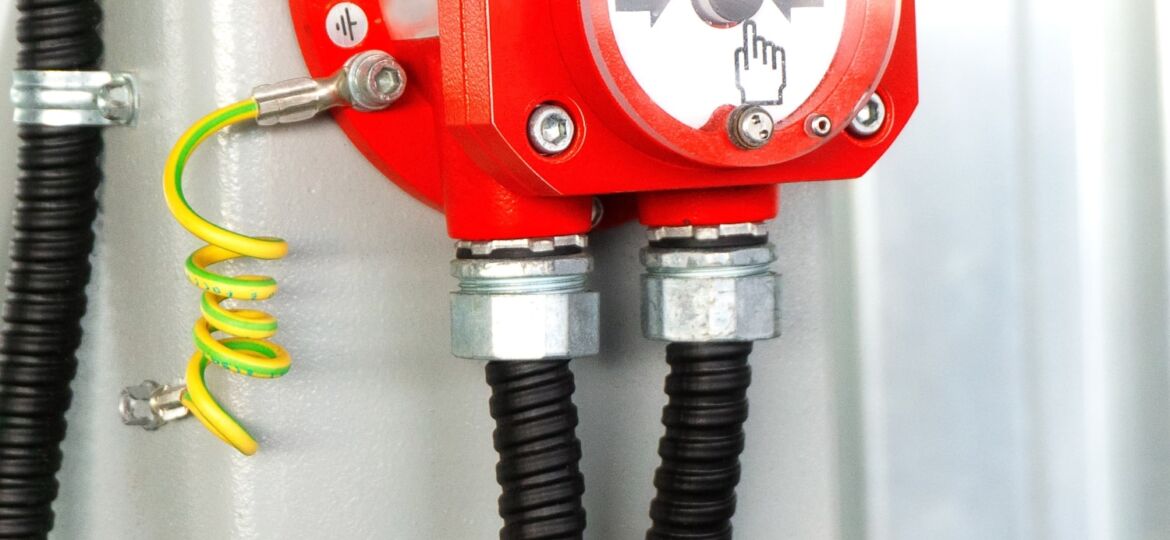
In today’s dynamic industrial landscape, adaptability and efficiency are key factors in achieving success.
Industries ranging from agriculture to manufacturing, construction to environmental cleanup, rely heavily on extraction processes to harvest valuable resources, remove pollutants, or ensure the quality of their products.
In this context, the emergence of “Portable Extraction Innovations” has ushered in a new era of flexibility and convenience, revolutionizing the way extraction operations are conducted.
Portable extraction solutions have redefined the boundaries of what is possible, enabling businesses to perform extraction tasks in diverse and remote locations.
Whether you’re a farmer harvesting crops in the field, an engineer cleaning up an environmental spill, or a researcher conducting on-site sample analysis, these innovations have become indispensable tools for professionals across various domains.
This exploration into “Portable Innovations for Versatile Operations” will delve deep into the world of portable extraction technology.
We will examine the principles that underlie these innovations, the industries and applications they serve, and the remarkable benefits they bring to the table.
From compact yet powerful machinery to mobile labs that can be deployed at a moment’s notice, the possibilities are boundless.
Join us on this journey as we uncover the cutting-edge advancements in portable , showcasing how they empower industries to adapt, thrive, and address challenges with unprecedented ease and efficiency.
Whether you’re a seasoned professional or simply curious about the transformative potential of portable extraction, this exploration will provide insights into a rapidly evolving landscape where innovation knows no bounds.
Portable Extraction Innovations for Versatile Operations
This detailed guide aims to comprehensively explore the realm of portable extraction innovations, covering the essential principles, the diverse range of equipment, their applications, the benefits they bring to various industries, and best practices for their utilization.
Whether you are a seasoned professional seeking to optimize your extraction processes or someone curious about the potential of extraction, this guide will provide valuable insights into a rapidly evolving landscape of innovation. For more information visit click here.
Principles of Portable Extraction
Portable extraction technologies are founded on a solid understanding of the underlying principles governing extraction processes. These principles are essential for designing efficient and effective portable systems. Let’s delve into the fundamental concepts:
Understanding Extraction Principles
Extraction refers to the separation of a desired substance or component from a mixture. This can involve mechanical, chemical, thermal, or other processes, depending on the nature of the substance and the application.
For example, in the agricultural sector, portable may involve mechanically separating fruits from their trees, while in research, it might entail chemically extracting specific compounds from natural samples.
Design Considerations
Designing a portable extraction system requires careful consideration of several factors, including the type of extraction method to be employed, the size and weight constraints of portable equipment, power source requirements, and safety considerations.
Efficient design ensures that the extraction system can perform its intended function in the target environment.
Versatility and Customization
Portable extraction systems should be versatile and customizable to accommodate a variety of extraction tasks. Modular designs that allow for the quick interchange of components or methods can enhance versatility and adaptability in different scenarios.
Types of Portable Extraction Equipment
Portable extraction equipment comes in various forms, each tailored to specific applications and industries. Let’s explore some common types of portable equipment and their features:
Portable Pumps and Vacuum Systems
These are often used in agricultural and industrial settings for tasks like liquid or gas extraction. Portable pumps and vacuum systems can be compact and powered by electricity, battery, or even gas engines, offering mobility and flexibility in diverse environments.
Mobile Laboratories and Analytical Tools
In research and quality control applications, mobile laboratories equipped with analytical instruments provide on-site analysis capabilities. These may include spectrometers, chromatographs, and sensors, enabling real-time data collection and analysis.
Compact Separators and Filters
Industries dealing with liquid-solid separation, such as wastewater treatment and mining, benefit from compact separators and filters that can be transported to the extraction site. These systems efficiently remove contaminants and solids from liquids, enhancing process efficiency.
Portable Sampling Devices
For field studies and environmental monitoring, portable sampling devices allow for the collection of samples directly from the source. These devices maintain sample integrity and can be easily transported to a laboratory for further analysis.
Advantages and Limitations
Each type of portable extraction equipment offers specific advantages and may have limitations. For instance, portable pumps provide mobility but may require a power source, while mobile laboratories offer real-time analysis but can be bulkier.
Choosing the right equipment depends on the specific extraction task and operational requirements.
Applications of Portable Extraction
Portable extraction innovations find applications across a wide range of industries. Here are some examples of how portable equipment is utilized:
Agriculture: In agriculture, solutions play a vital role in crop harvesting and analysis. Portable fruit-picking machines, for instance, efficiently harvest fruits from trees while preserving their quality.
Additionally, portable analytical tools allow farmers to assess soil quality and crop health on-site, enabling informed decisions.
Manufacturing: In manufacturing settings, extraction equipment ensures product quality and process efficiency. Portable quality control devices can be used on the production floor to test materials for defects or contaminants, leading to quicker adjustments and reduced waste.
Environmental Cleanup: Environmental emergencies, such as oil spills, require rapid response and effective extraction. Portable systems equipped with oil skimmers can be deployed quickly to contain and recover spilled oil, mitigating environmental damage.
Research: In scientific research, extraction equipment enables field studies and sample collection. Researchers can collect samples from remote locations and perform initial analyses on-site using mobile laboratories.
This minimizes sample degradation and allows for immediate adjustments to research protocols.
Case Studies: Real-world case studies in each application area can illustrate how extraction innovations have been successfully employed. These examples highlight the practical impact of portable on various industries.
Benefits of Portable Extraction
Portable extraction innovations offer a host of benefits that make them indispensable tools across industries:
Mobility and Flexibility: Portable equipment can be transported to the extraction site, reducing the need for transporting raw materials or samples to a centralized facility. This mobility is particularly valuable in remote or hard-to-reach locations.
Cost-Effectiveness: By eliminating the need for large-scale transportation and setup, extraction solutions can significantly reduce operational costs. This cost-effectiveness extends to industries such as agriculture, where manual harvesting can be labor-intensive.
Rapid Response: In emergency situations, such as environmental disasters or disease outbreaks, extraction equipment can be rapidly deployed. Quick response times can mitigate damage and save resources.
Enhanced Data Accuracy: Portable analytical tools and laboratories provide real-time data, allowing for immediate decisions and adjustments. This accuracy improves the quality of products and reduces the risk of errors.
Minimized Environmental Impact: Portable solutions can reduce the environmental impact of extraction processes. For example, in agriculture, precise harvesting techniques minimize damage to crops and reduce waste.
Best Practices for Portable Extraction
To maximize the benefits of portable extraction equipment, it’s essential to follow best practices:
Equipment Selection: Choose equipment that aligns with your specific needs and the conditions of the extraction site. Consider factors such as the type of extraction, power source availability, and portability requirements.
Maintenance and Calibration: Regular maintenance and calibration are crucial for ensuring the reliability and accuracy of extraction equipment. Develop a maintenance schedule and follow manufacturer recommendations.
Safety Measures: Implement safety protocols to protect operators and the environment. extraction equipment may involve hazardous materials or processes, so proper safety training and equipment are essential.
Data Management and Analysis: Establish efficient data management practices to handle the information generated by portable analytical tools. Ensure that data is securely collected, stored, and analyzed for informed decision-making.
Compliance: Be aware of industry regulations and standards that apply to your specific extraction task. Ensure that your extraction equipment and processes comply with these regulations.
Challenges and Future Trends
While portable extraction innovations offer numerous advantages, they also come with challenges and opportunities for further advancement:
Power Sources: Portable equipment often relies on power sources such as electricity or batteries. Developing more efficient and sustainable power solutions is an ongoing challenge.
Storage and Transport: Managing and transporting portable equipment can be challenging, especially for bulky systems. Innovations in compact design and ease of transport are crucial.
Equipment Miniaturization: The trend toward miniaturization continues, allowing for even smaller and more portable extraction devices. This can enhance mobility and accessibility in various applications.
Automation and Connectivity: Automation and connectivity technologies, including the use of sensors and IoT (Internet of Things), are becoming increasingly prevalent in portable extraction equipment, offering real-time monitoring and control capabilities.
Artificial Intelligence and Machine Learning: AI and machine learning are being incorporated into portable extraction systems to optimize processes, analyze data, and make predictive adjustments for improved efficiency.
CONCLUSION
In conclusion, portable extraction innovations have ushered in a new era of versatility, efficiency, and adaptability across industries. Understanding the principles that underlie portable extraction, selecting the right equipment, and following best practices are essential for realizing the full potential of these technologies.
As industries continue to evolve and adapt to changing demands and challenges, portable extraction solutions are set to play an even more significant role in ensuring the success and sustainability of extraction processes. By embracing these innovations and staying attuned to emerging trends, industries can leverage the power of portability to enhance their operations, reduce costs, and contribute to a more efficient and sustainable future.



